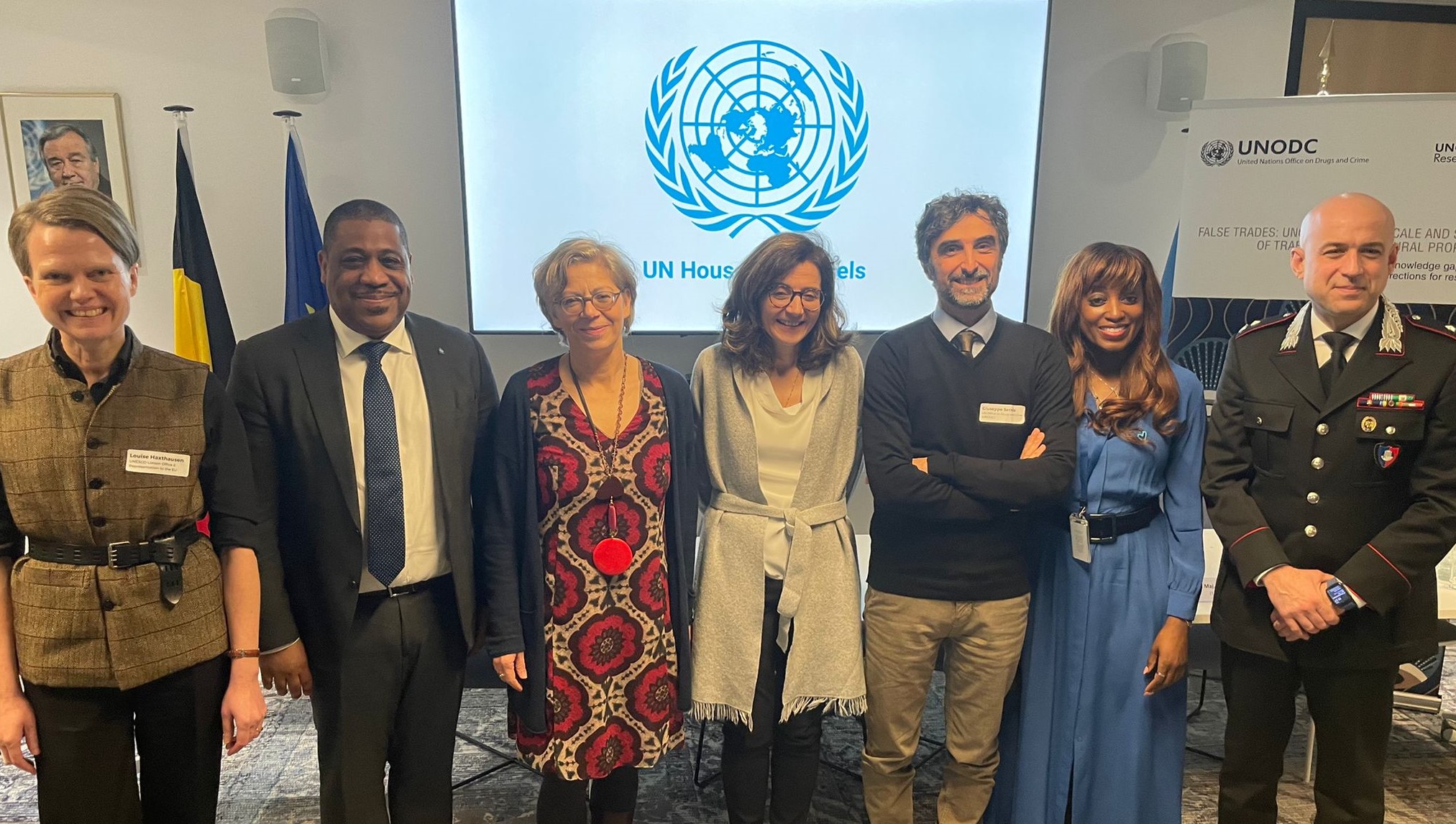
6 March 2023, Brussels – The United Nations Office on Drugs and Crime (UNODC), INTERPOL, and the European Commission came together to co-organise a seminar on “False Trades: Uncovering the scale and scope of trafficking in cultural property”.
Trafficking in cultural property, together with the destruction of cultural heritage, has been recognized as a threat to international peace and security by the UN Security Council, along with it being an impediment to the enjoyment of cultural heritage as a human right guaranteed by international law, and to the achievement of the 2030 Agenda for Sustainable Development.
In recent years, the world has witnessed the growing involvement of organized criminal and terrorist groups in the destruction and looting of archaeological sites and various forms of trafficking in cultural property. It is a global problem that affects every country and all regions. Political instability, corruption, lack of resources, and notably conflict situations exacerbate a state’s vulnerabilities. It is therefore fundamental to act together through multilateral and multi-stakeholder platforms to provide coordinated and sustainable responses to the problem.
It is in this spirit that over 70 participants from international organizations, European institutions, Governments, national criminal justice and border management authorities, and cultural sector gathered to attend the seminar at the UN House in Brussels. UNODC presented its eponymous Research Brief (2022), the EU laid out its Action Plan against Trafficking in Cultural Goods (2022), and INTERPOL, UNESCO and Italian Carabinieri intervened at the seminar, moderated by Mr. Giuseppe Sernia, Programme Officer, Border Management Branch, UNODC, which allowed for a vibrant exchange on lessons learned, good practices, and knowledge gaps.
Recalling the robust international and complementary legal framework in place to prevent trafficking in cultural property, with instruments such as the 1970 UNESCO Convention, 1995 UNIDROIT Convention, and 2000 UN Convention on Transnational Organized Crime, UNODC Brussels Representative, Ms. Yatta Dakowah in her welcome address remarked that “Despite many decades of normative and operational efforts, paired with an engaged academic and international community seeking to shed light on this form of crime, more policy and operational cooperation and research are needed”.
On behalf of the European Commission’s Directorate-General for Migration and Home Affairs, Ms. Alexandra Antoniadis, Deputy Head of Unit, Organised Crime & Drugs, highlighted during her presentation of the EU Action Plan that “This is the first time that the Commission and the EU External Action Service are presenting a comprehensive picture of their ongoing and planned actions against the multifaceted phenomenon of cultural goods trafficking and related crimes, requiring targeted and coherent actions by various stakeholders in many different policy areas. Such actions include improving the intelligence picture, fostering closer cooperation between stakeholders including the private sector as well as the need to go after illicit money flows and targettingtargeting the organized crime networks behind the individual trafficking cases."
On law enforcement on the topic, Mr. Pierre Saint Hilaire, Special Representative of INTERPOL to the EU, stressed that “The global nature of cultural heritage theft, and its growing connection with transnational organized crime groups, requires a multi-sector multi-region approach. INTERPOL will therefore continue to work with its multiple partners worldwide, including the UN, EU, Egmont Group, Financial Action Task Force, Museums and other private sector actors.”
Among the many takeaways from the event was the need to further research to fill gaps on the topic as highlighted by Ms. Angela Me, Chief of the Research and Trends Analysis Branch of UNODC, stating that “There is a need for a comprehensive global database of seizures and court cases, as well as a global analysis to understand the worldwide connections, actors, vulnerable points, and harm caused by trafficking in cultural property”. In addition to this, further enabling and strengthening of inter-agency and cross-sectorial cooperation with and between all actors is crucial.
The great turnout in number and diversity of participants not only indicates increasing interest and attention to the problem of trafficking in cultural property, in particular in the European context, but also shows stronger commitment to bolstering policy and operational cooperation at national, regional, and international level.